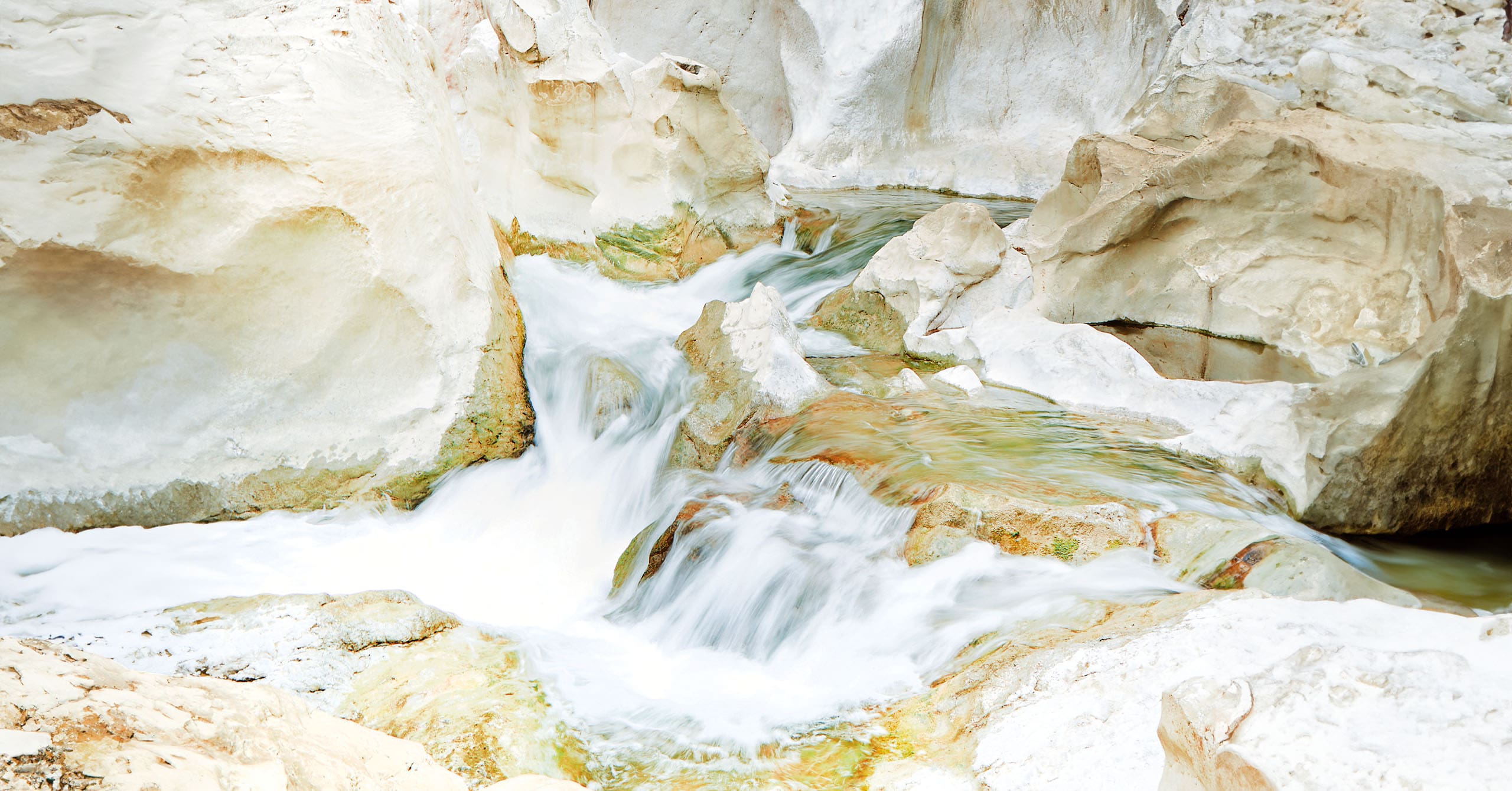Photograph by Sela Gonzales
Photograph by Sela Gonzales
Nomad Projects collaborated with the Dumagat-Remontado indigenous people to record through frottage the marvelous limestone rock formations along Tinipak River, before their landscapes become completely submerged.
Vien Valencia spread a length of canvas over a pile of rocks and began rubbing over it with a piece of lumber crayon. It was raining, but the black wax impressions did not wash off. Cream-colored boulders surrounded him and above him loomed lush mountain forests. Below, the green waters of Tinipak River playfully flowed. A few members of the community living by the river looked on, at first curiously as the exercise appeared somewhat ridiculous, then later in fascination, as the rock surfaces began to take on two-dimensional textural form on the cloth. “It’s the same effect as rubbing a pencil over a piso coin,” Valencia explains. Understanding dawned on the excited spectators, and they invited others to join.
Construction of the Kaliwa Dam is underway. Projected to be completed in 2026, the 63-meter-high dam is being built primarily to solve the Metro Manila water shortage problem. The area that it will submerge has been the ancestral domain of the Dumagat-Remontado indigenous people, who have lived along Tinipak River for as long as they can remember. Many of them work as hiking tour guides for climbing Mount Daraitan, and at other jobs that support eco-tourism. It is expected that in less than 10 years, the rock formations and low-lying communities will be completely submerged by the reservoir. This affected area encompasses 300 hectares of the Sierra Madres—one of the Philippines’ last remaining forested mountain ranges and a natural barrier that protects Luzon from typhoons sweeping in from the Pacific Ocean.

Through the frottage project, Valencia hopes to illuminate how we intervene with geography, and conversely, how landscapes shape us as a society. He stresses the importance of transgenerational empathy, of becoming good ancestors to future generations: “Indigenous peoples are the frontliners of our natural resources, and their final guardians. We must take care of them.”
Valencia is the founder of community-based art initiative Nomad Projects. Their workshops around the Philippines are wholly collaborative, and the Tinipak River activity is a prime example. “The frottage work took [on] a life of its own. We did not dictate how it progressed,” he recounts. “The attendees grouped into pairs or teams of three, and they chose their own areas to record. Frottage doesn’t require artmaking experience or much guidance, so anyone is free and able to join. They were so open to the project that they wanted to use up all the available cloth. We could see how much they valued their landscape.”
Vogue traveled to Tinipak River in May 2023 to join a round of frottage-making with the students of Daraetan Elementary School. Valencia invited me to conduct a simple curatorial workshop by the river and help the children install their work afterward at the school. He brought along geologist Naomi Irapta, an invaluable resource in our learning about the geoscience perspective.
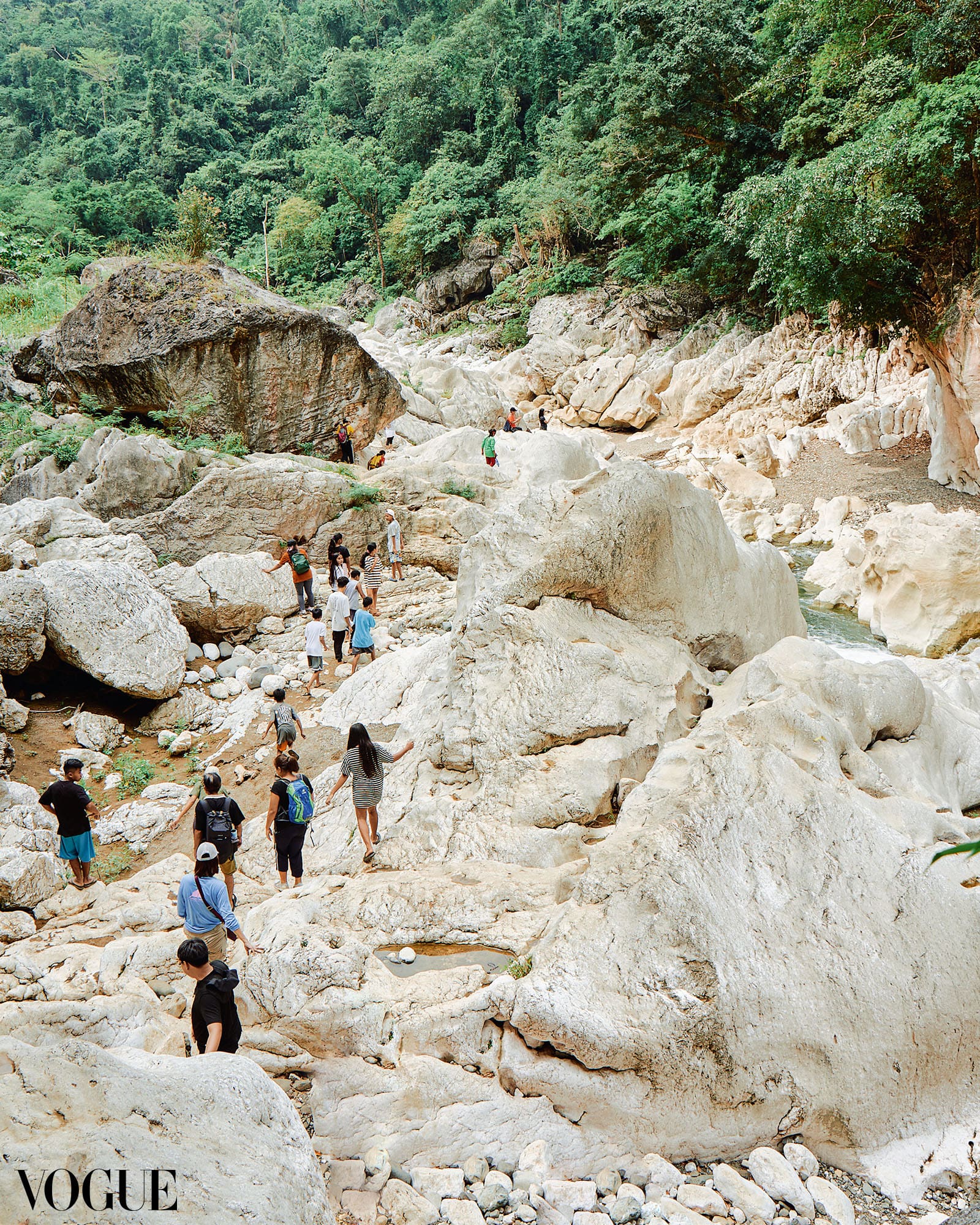
Irapta became interested in the Tinipak River project because her research investigates geodiversity, the non-living equivalent of biodiversity. “When it comes to nature and landscape conservation, we are more inclined to think of saving biodiversity (animal species and forests) from extinction and in the protection of habitats,” she explains. “But non-living nature (soils, rocks, landscapes) is just as important.” She arranged to meet with Valencia to know more about the project. “I recognized that his project can be an example of the emotional value or place attachment of the landscape to people.”
To get to the school, we traveled to Tanay and crossed a bridge over the river. At this entry point, rows of cogon huts line the riverbank and families were swimming in the waters to cool off from the intense summer heat. Daraetan Elementary School is cheerfully decorated with painted rubber tires and colorful mushroom sculptures crafted from coconut husks. Within its grounds are a fishing pond and a small vegetable farm. The students learn art in its most practical form: as crafts like paper flowers, making piggy banks out of hollow coconut shells and sewing bags from recycled plastics. Around 20 children, ranging from grades 7 to 9, all of whom are indigenous, met us there for an orientation before the hike. I was surprised at how many of them showed up, considering it was not only a Sunday, but in fact Mother’s Day.
We loaded ourselves into a fleet of tricycles to reach the deeper section of the river, where we then proceeded on foot. The hike itself provided gorgeous vistas of the river and its surrounding rock formations. Its undulating terrain can be a challenge for beginners, yet we encountered many hikers and their guides along the way. The path is layered with a variety of chunky rocks, sometimes made slippery after the rains when moss and lichens form. There are also several makeshift ladders for scaling steeper inclines.
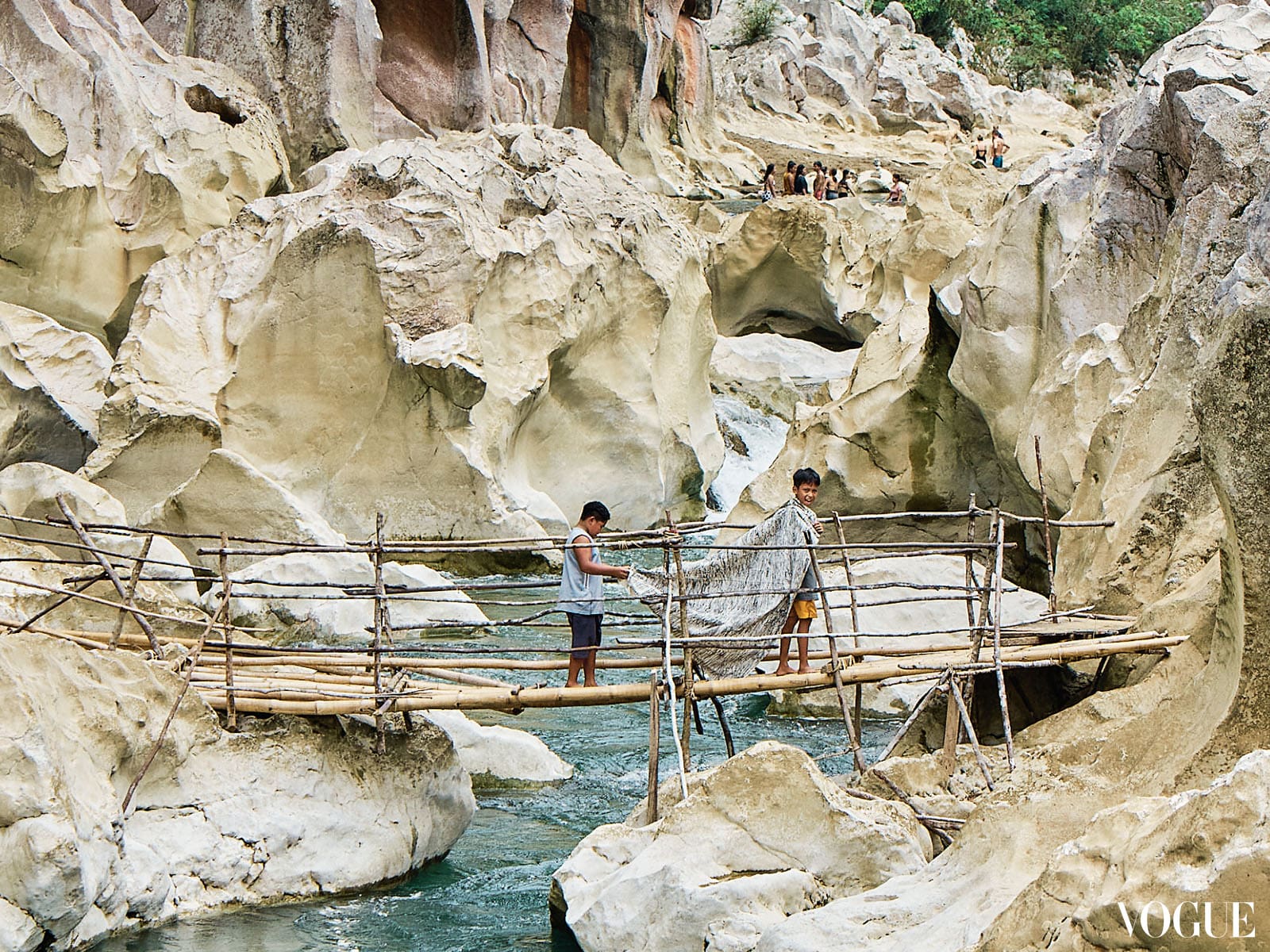
The spot we settled down at for frottage-making, already in the region of General Nakar, Quezon, has breathtaking views of towering pink limestone cliffs with blood-red veins, resembling pink marble. A small foot bridge stretches over the river, enabling us to visit both sides of it. The children nimbly hopped along the rocks and boulders, finding surfaces they had chosen to record. It was a delight to watch them enthusiastically rubbing away with their materials. Naomi Irapta and members of the Vogue team attempted the frottage as well, soon realizing that making large repetitive strokes was just as rigorous as the hike itself.
Irapta shares that her biggest takeaway from the hike was the interactions with the Dumagat-Remontado guides. “From our conversations, it was clear how much they know about the landscape despite not having Western earth science education. I was asking Kuya Let [the guide] how the Tinipak River formed, and he explained to me, in plain local Filipino language, the process of weathering and erosion—that when it rains and as the river flows, it eats away the rocks. Because they live within this landscape, they therefore know it more intimately than I ever could.”
Upon completing their work, the children held up the frottage pieces against the landscape to be photographed. In this way, I was able to distill our little curatorial workshop into the notion of “landscape as gallery,” outside of the white cube, without the need for walls. These photographs also make a powerful statement: indigenous children, the future of their community, bearing their work like banners, within their own homeland. This could be one of the last professional portrait sessions of the people in their landscape before it ceases to exist.
Back at the school, we found an exhibition space to install the artworks for a longer period, safe from rain. The campus has a room which used to be a library, but it was empty because books had not been sent to the school since the pandemic began. Now, it has become an ideal room to showcase their more intuitive type of learning.
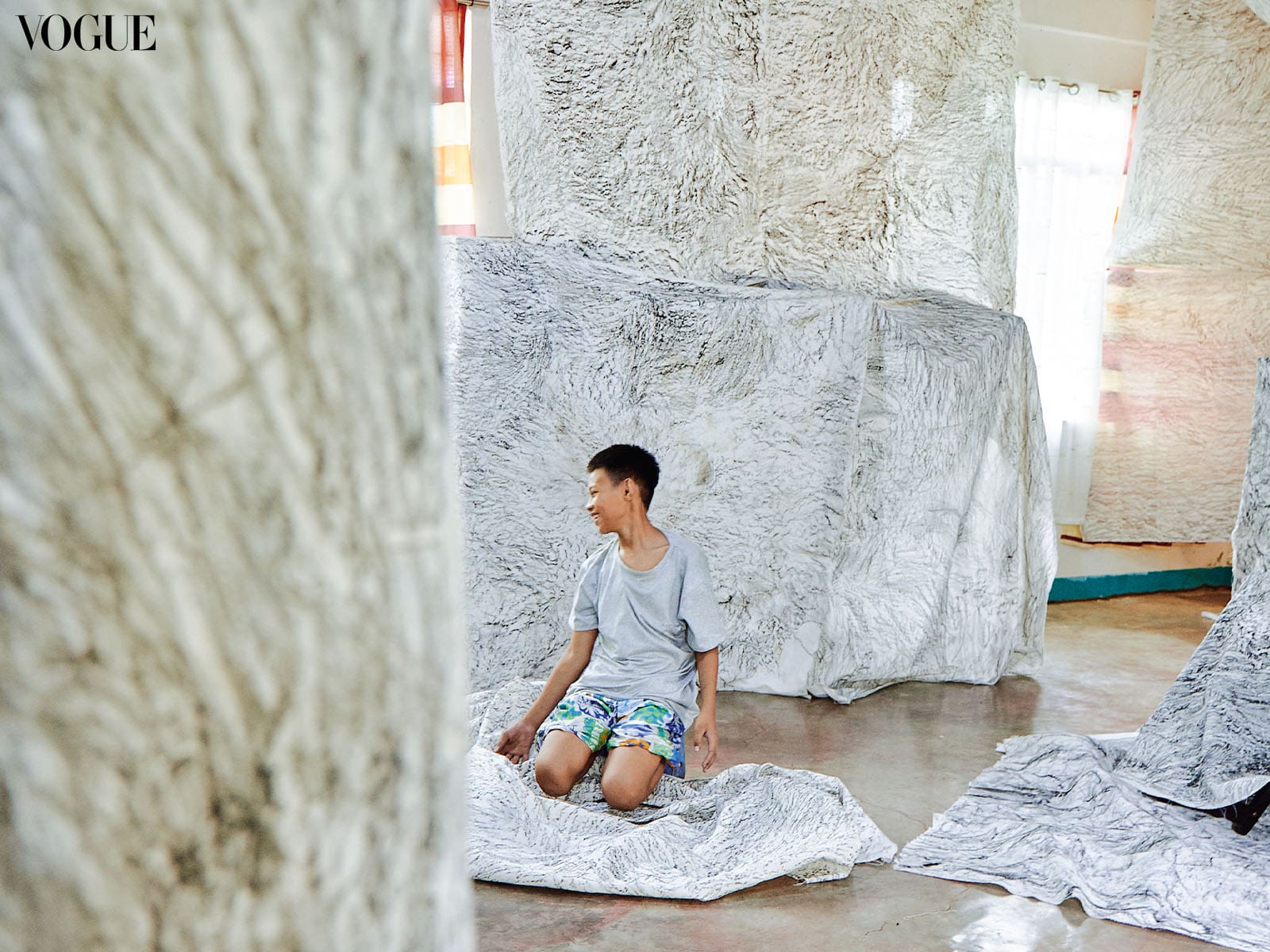
We discussed with the children their ideas on how to hang the canvases. They are inherently creative, and they suggested multiple ways of display. With the children taking the lead, we hung canvases from the ceiling, laid them on the floor, draped them over pieces of furniture, and made shapes with rock pieces inserted underneath the cloth. The children would sometimes hide under them like tents, reminiscent of homemade forts and playhouses assembled with chairs and blankets. The installation took on three-dimensional form, a visual representation that the adults never thought of. It was an imaginative outcome for exhibition design. The children were empowered with the process, telling their own story. It is true that with Nomad Projects, inspiration goes both ways.
Irapta recently attended the European Geosciences Union Assembly 2023 in Vienna, Austria, last April. The EGU General Assembly brings together geoscientists from all over the world to discuss disciplines of the Earth, planetary and space sciences. In lieu of a standard poster, she brought along a piece of frottage to show the audience. “They actually joked that I win best poster!” she quips. For her presentation, Irapta wanted to focus on geodiversity “as important to people, and that in itself should be a value that we as researchers should talk about more.” Specifically referring to Nomad Projects, she argues, “They chose to preserve the rocks instead of, for example, the general river landscape though paintings, photography or 3D reconstructions, or the biodiversity, or the location of people’s houses near the river. There is an implicit recognition that rocks are an important part of the landscape.”
This project has blurred the lines between artists, scientists, researchers, locals, and children. Through our conversations, we have found commonalities.
She expounds that UNESCO recognizes geoheritage as the geology version of the World Heritage Sites. “However, for a rock or a place to be considered geoheritage, there must be many scientific publications about it. Criteria also looks into the educational value—if we can use the area to teach earth science concepts, as well as the touristic value—if it can be used for geo/rock-focused tourism.” One recent milestone is the declaration of Bohol Island as a UNESCO Global Geopark, a first in the Philippines.
Two weeks later, I returned to Tinipak River with Nomad Projects, this time with a group of artists, to listen to a geology talk by Irapta with our local guides. The weather had already turned. It was much less humid and much more windy; the cooler air aided in an easier hike. We proceeded straight to the riverbank and started immediately with frottage-making. While we worked, the artists enlightened me with even more ways of understanding the process. According to Brisa Amir, whose body of work heavily involves frottage, the rubbings are recordings of both past and present, with the raised portions as the present, and the weathered down portions as the past.

Moreover, each artist had a clearly distinct way of rubbing. Musician and photographer Germain Gomez was using large loops that reminded us of Cy Twombly’s scribble-drawings. Artist Yana Ofrasio commented that she used to teach preschool and learned that even illegible scribbles can be read—they still convey emotion and meaning through the force of the strokes, the apparent energy of the gestures, or their opposite, the lightness and softness of the lines.
Even if each canvas was collaboratively worked on by several artists, as soon as their strokes came together to complete the piece, the whole looked cohesive, just as a landscape is made up of different elements that form a harmonious whole. When we asked Valencia to reflect on the last four months since he began the Tinipak River program, he replied, “This project has blurred the lines between artists, scientists, researchers, locals, and children. Through our conversations, we have found commonalities. The more I engaged, the more profound my perspectives became. Our gatherings have been diverse, dynamic, intergenerational, and transcended expectations.”
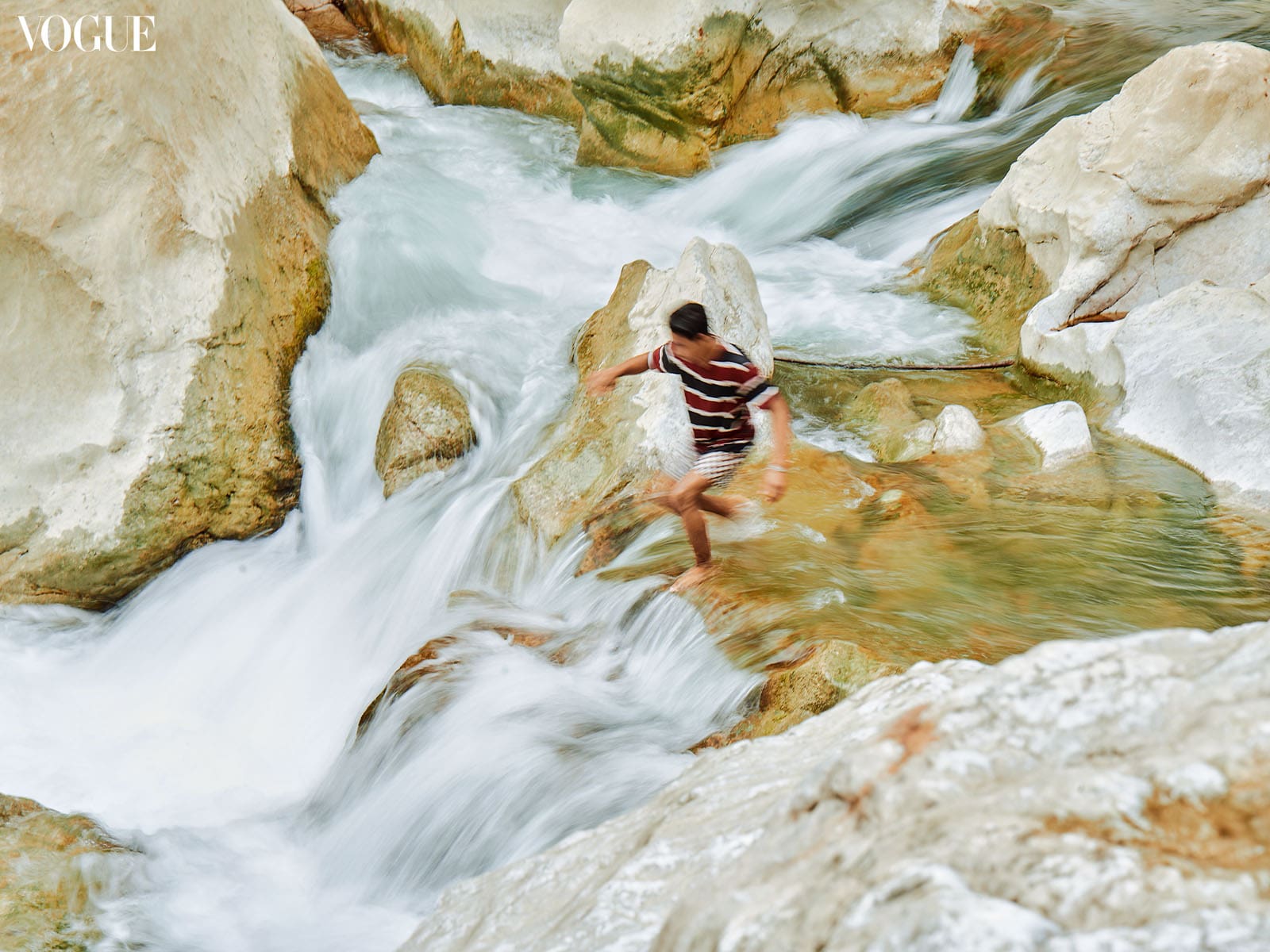
When the noon sun approached, we couldn’t resist diving into the refreshing river. Ultimately, the best way to appreciate the river is to swim in it and admire the rocks as they stretch from the sky to the waterline. Lunch was cooked and served in the home of one of our Dumagat-Remontado guides.
After visiting the river and interacting with the locals, Irapta now believes that Tinipak River is special both geologically and as a place that is rich in stories about the earth: “And if the stories and the frottage are all we have left of it years down the line, then I’m so glad I was able to listen to some of its stories, told by the Dumagat-Remontado.”
